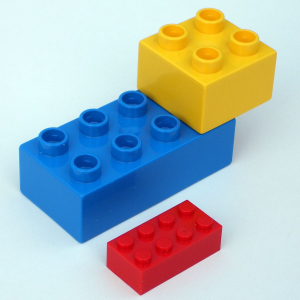As I come to the end of the year I have chosen to reflect back on the journey I’ve navigated, the people I’ve engaged with and look to adventures that await me in 2018 as part of a series of learning opportunities that have presented themselves to me.
Professionally it’s been an amazing experience. I’ve continued to engage with great clients, locally and abroad. Some with a purpose close to my heart, finding their potential and supporting them through their own change journeys. My first learning moment of the year came when I realised that although I need financial reward for my endeavours I place equal value on making a difference and releasing other’s potential. This part of the value I place when deciding to begin an engagement.
My first learning moment ... I place equal value on making a difference and releasing other's potential
It was only in 2015 I launched the Capillary Learning offerings. My desire to get people thinking change, rather than just regurgitating a process, led to the Certified Change Agent (CCA) credential that has now been experienced by over 200 people. Learning point two came this year as I reaffirmed my desire to share knowledge with others hungry to learn.
Learning point two ... I reaffirmed my desire to share knowledge with others hungry to learn. Curiosity has continued to be a part of my very existence. Thanks to my sparring partner, Nik Beeson, I've kept challenging and questioning and we've done some great workshops this year with curiosity and now have a Meetup group of over 500 members. My fourth learning came from these, sometimes less is more. I learned that small workshop groups can have the most profound discussions and it truly is more important to have quality over quantity for workshop attendees.
My third learning came on the back of this, I have to take my enthusiasm and the CCA to new people in new places, so London, England is on the 2018 list and more Canadian cities too!
My third learning ... I have to take my enthusiasm and the CCA to new people in new places
Curiosity has continued to be a part of my very existence. Thanks to my sparring partner, Nik Beeson, I’ve kept challenging and questioning and we’ve done some great workshops this year with Curiosity Culture and now have a Meetup group of over 500 members. My fourth learning came from these, sometimes less is more. I learned that small workshop groups can have the most profound discussions and it truly is more important to have quality over quantity for workshop attendees.
My fourth learning ... small workshop groups can have the most profound discussions and it truly is more important to have quality over quantity
I’ve been coaching a number of great executives and leaders in their organization. I love to get the “aha!” moment and I’ve truly heard it and seen it with many of these clients. Learning number 5 came directly from these experiences – you should always be learning! I have committed myself to learn at least one new tool, technique or skill every year from now on.
Learning number 5 ... you should always be learning! I have committed myself to learn at least one new tool, technique or skill every year from now on.
I began applying this learning point, when I finally got to do the big Lego® Serious Play® course I’ve wanted to do for some time. I did a short course several years back but it never lit a spark in me but now I’ve done the 40 hour version I have been inspired to reconnect and 2017 certainly saw me involved in some great Lego inspired actives including incorporation of it into the CCA. Learning item six is not writing something off because it didn’t work in one format or style, everything deserves another chance.
Learning item six ... not writing something off because it didn't work in one format or style, everything deserves another chance.
I’ve had some great speaking gigs in 2017. In Texas and Chicago I let loose with the Lego and Berlin Change Days was a performance I shall remember for some time! I’ve presented to 200+ and 15 in a room and thoroughly enjoyed both extremes. My key learning here, number 7, is to remember self care. Surprising to most I’m a natural introvert and I need to remember that these events take a lot out of my energy bank, so I should find the time to recharge and recover.
My key learning here, number 7, is to remember self care
My final, eighth learning point builds on the self care. Appreciate the communities you are part of and let them be there for you. 2017 saw me end my time leading the Toronto Chapter of the ACMP and letting go can be hard, as Bill Bridges will confirm and I’m definitely embracing the new zone now. I have many great connections in the change space and I thank you all for the great conversation, thought provoking comments and insights into the field I’d never normally think. Learning point 8 is be grateful for the support of others – Thank you!
Learning point 8 is be grateful for the support of others - Thank you
















